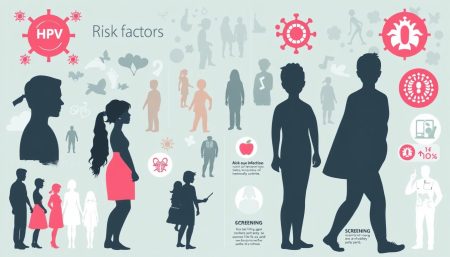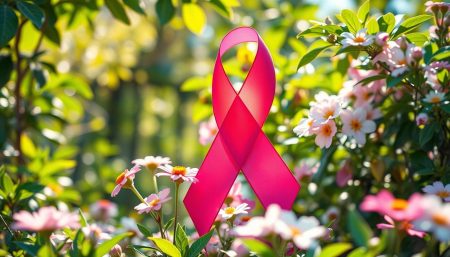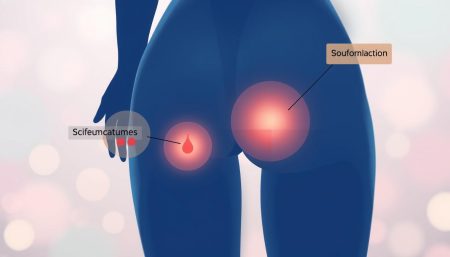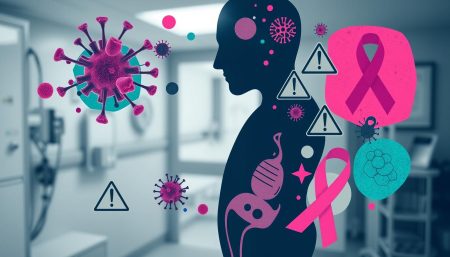The question of “how do you get anal cancer” is complex and essential for awareness and early detection. Cancer of the anal region may not be as widely discussed as other forms. But understanding its risk factors and recognizing the signs of anal cancer can be life-saving. It’s crucial for those concerned about this type of cancer to learn about prevention.
Learning about how to prevent anal cancer is key. The stories of those who have faced this illness offer a personal and deep perspective. They show how important it is to know about anal cancer and stay vigilant.
Key Takeaways
- Recognizing the risk factors associated with anal cancer plays a significant role in prevention and early intervention.
- Being vigilant about the signs of anal cancer is instrumental in securing a timely diagnosis.
- Educating oneself on how to prevent anal cancer could potentially reduce the risk of development.
- Real stories from cancer survivors can provide invaluable insights and foster greater awareness.
- Empowerment through education is a core component in the fight against this disease.
Understanding Anal Cancer: A Primer
Anal cancer is not as common as other cancers but is still important to know about. It starts as a cancerous growth in the anal region, from the anal margin to the rectum. It’s different from other colorectal cancers because of its location and the cells involved.
This cancer mainly comes from the lining inside the anal canal. It’s important to know how it changes cells to catch it early and treat it well.
Raising awareness about anal cancer and educating the public on its symptoms and risk factors is paramount. Highlighting the existence of this condition is vital not only for early diagnosis but also for reducing stigma associated with the disease.
Cellular Characteristics:
- Squamous cell carcinoma: Most common form, originating from the flat cells lining the anal canal.
- Adenocarcinoma: Starts in the glandular cells in the lining of the anal canal.
- Rare forms: Melanoma and lymphoma can also manifest in the anal region.
The following table provides a brief outlook on the types of cells associated with anal cancer versus other colorectal cancers:
| Cancer Type | Cell Type Involved | Common Location |
|---|---|---|
| Anal Cancer | Squamous and glandular cells | Anus to lower rectum |
| Colorectal Cancer | Columnar cells | Upper rectum to colon |
Understanding cancerous growth in the anal region is key. Raising anal cancer awareness is crucial. Talking about it can help a lot, showing the importance of education and resources.
Major Risk Factors for Anal Cancer
Anal cancer is not as common as other types, but it has specific risk factors. Knowing these helps us understand how to prevent and detect it early. The main factors include HPV infection, smoking and substance use, age, and gender.
Human Papillomavirus (HPV) Infection
HPV is a big risk for anal cancer. It infects the cells in the anal canal, causing changes that can lead to cancer. Vaccination and screenings are key to prevent this.
Smoking and Substance Use
Smoking greatly increases the risk of anal cancer. Tobacco’s harmful chemicals damage DNA, leading to mutations. Heavy alcohol use also raises cancer risks.
Age and Gender Considerations
Anal cancer risk grows with age, mainly affecting those over 50. Women are slightly more likely to get it than men. Knowing this helps target awareness and screenings.
| Risk Factor | Impact on Cancer Risk | Prevalence |
|---|---|---|
| HPV Infection | High | Widespread in anal cancer cases |
| Smoking | Significantly High | Common in general population |
| Age 50+ | Increased | Most cases diagnosed at this age |
| Gender (Female) | Moderately Increased | Higher incidence in females |
How Do You Get Anal Cancer: Investigating Causes
Looking into the causes of anal cancer shows us more than just known risks. It shows how lifestyle, sex, and harmful substances play a part. This deeper look at anal cancer etiology helps us see more ways to lower the risk of getting this disease.
Studies have found that diet and exercise are important. Eating too much fat and not enough fiber might increase cancer risk, including anal cancer. Also, sex practices, especially those that expose you to HPV, are key in talking about anal cancer etiology.
- Chronic irritation in the anal area, often from prolonged sitting or certain types of clothing
- Persistent infections or inflammations, which may lead to cellular changes over time
- Exposure to ultraviolet radiation or chemical irritants either accidently or occupationally
Understanding these factors helps us see how to prevent anal cancer. It shows us many ways to lower our risk.
| Lifestyle Factor | Potential Impact on Anal Cancer Risk |
|---|---|
| Diet (High in animal fats and low in fiber) | May contribute to higher risk |
| Physical Activity (Low) | Associated with increased general cancer risk |
| Sexual Behavior (Multiple partners, unprotected sex) | Risk of HPV, a major factor leading to anal cancer |
| Chemical Exposure (Industrial chemicals, radiation) | Can cause mutations leading to cancer |
In conclusion, knowing the many causes of anal cancer is key to reducing risk. It helps us create better health plans. By being aware and taking action, we can change the numbers of people getting anal cancer.
Common Symptoms and Signs of Anal Cancer
It’s important to know the symptoms of anal cancer to catch it early. Spotting these signs early can help you get the right treatment. This is crucial for diagnosing anal cancer correctly.
Anal Discomfort and Bleeding
Discomfort around the anus is a common first sign. This might feel like pain or pressure. Bleeding, especially during bowel movements, is a big warning sign.
Seeing blood in your stool or on toilet paper is a must-talk-about topic with your doctor.
Persistent Anal Itch or Mass
A constant itch or feeling of a mass in the anal area could mean cancer. These symptoms can be uncomfortable and might show up as a noticeable lump or swelling. This is a sign of abnormal tissue growth.
Changes in Bowel Habits
Changes in how you go to the bathroom, like diarrhea or constipation, can point to problems. These signs, along with others, should prompt you to see a doctor.
For more info on anal cancer symptoms, check out trusted sources. They offer insights into managing and spotting risks.
| Symptom | Description | Immediate Actions |
|---|---|---|
| Bleeding | Presence of blood during bowel movements | Consult healthcare provider |
| Anal Discomfort | Pain or pressure in the anal area | Seek medical evaluation |
| Itch or Mass | Persistent itching or detectable mass | Professional assessment |
| Bowel Habit Changes | Inconsistent stool size, constipation, or diarrhea | Discuss with a physician |
Acting fast on anal cancer symptoms can lead to better treatment. Being aware and educated is key in fighting anal cancer.
Preventive Measures for Anal Cancer
Reducing cancer risk is a top goal in healthcare, especially for anal cancer. There are many ways to prevent anal cancer. These include lifestyle changes and medical steps to lower risk factors.
Lifestyle changes are key in preventing anal cancer. Quitting smoking is very important. Smoking raises the risk of many cancers, including anal cancer. Eating well and exercising also help prevent cancer by boosting health and the immune system.
Getting vaccinated against Human Papillomavirus (HPV) is another big step. HPV is linked to most anal cancer cases. The HPV vaccine has cut down on HPV infections and related cancers.
Practicing safe sex is also crucial. Using protection and having fewer sexual partners can lower HPV and other infection risks. These infections can lead to cancer.
| Preventive Strategy | Targeted Risk Factor | Effectiveness |
|---|---|---|
| HPV Vaccination | HPV Infection | Highly effective in preventing types of HPV that cause the majority of anal cancers |
| Smoking Cessation | Tobacco Use | Significantly reduces risk of various cancers, including anal cancer |
| Barrier Protection During Intercourse | Sexually Transmitted Infections | Reduces risk of HPV infection, thereby lowering cancer risk |
Following these preventive steps is vital in lowering anal cancer risk. Regular health checks and personal health habits are key. Together, they help keep you healthy and protect against anal cancer.
Role of Family History and Genetics in Anal Cancer
Looking into the connection between genetic risk factors for cancer and a family history of cancer helps us understand anal cancer better. It shows how genetics and environment work together to raise some people’s risk. This knowledge is key to spotting who might be more at risk.
Genetic Mutations and Hereditary Factors
Studies show certain genetic changes can greatly increase the chance of getting anal cancer. These changes, often passed down, mess with how cells grow and fix themselves. Spotting these early can lead to better health plans.
Family History: Understanding Your Risk
If your family has a history of cancer, especially in the colon, your risk for anal cancer goes up. This shows why talking about your family’s health with doctors is so important. It helps figure out your genetic risk.
| Connection | Impact |
|---|---|
| Genetic Mutations | Direct influence on cell mechanisms; higher cancer propensity |
| Family Medical History | Indicative of potential genetic predispositions; essential for risk assessment |

Importance of Anal Cancer Screening and Early Detection
The role of anal cancer screening is crucial for early cancer detection. Early detection through screening can greatly improve treatment outcomes. It also leads to better health for patients.
Anal cancer screening uses different methods to find cancer early. These methods are key for treating cancer when it’s most manageable. It’s important to follow screening schedules, especially for those at higher risk.
| Screening Method | Description | Recommended Frequency |
|---|---|---|
| Anal Pap Test | Collects cells from the anal canal to detect abnormal changes. | Once every 2-3 years for at-risk individuals |
| High-Resolution Anoscopy | Uses a special microscope to examine the anal canal more closely. | Dependent on initial findings; consult with healthcare provider |
| HPV Testing | Tests for the presence of high-risk HPV types associated with anal cancers. | As advised by healthcare professionals based on Pap test results |
Early cancer detection has many benefits. It focuses on preventive health, helping people stay healthy. Education and better screening access are key to early diagnosis in at-risk groups.
Getting involved in anal cancer screening and talking to doctors about early detection is important. It leads to earlier treatment and better health outcomes. It’s a top priority for public health and individual well-being.
Diagnostic Procedures for Detecting Anal Cancer
Understanding the diagnostic procedures for anal cancer is key. These tests help doctors find out if you have cancer and how far it has spread. We will look at anoscopy, biopsy, and imaging tests, and why they are important.
Anoscopy and Biopsy
Anoscopy uses a small tube with a light to look inside the anus. It helps find any problems. Then, a biopsy takes a small tissue sample from the anus. This sample is checked under a microscope to see if there are cancer cells.
Imaging Tests and Their Role
Imaging tests are vital for finding and staging anal cancer. They help see if the cancer has spread. Here’s a table that explains the different imaging tests used.
| Test Type | Description | Purpose |
|---|---|---|
| Ultrasound | Uses high-frequency sound waves to create images of the anal region. | Detects abnormalities in soft tissues around the anus. |
| MRI (Magnetic Resonance Imaging) | Utilizes strong magnets and radio waves to produce detailed images of organs and tissues. | Assesses the extent of cancer spread and involvement of adjacent tissues. |
| CT (Computed Tomography) Scan | Combines X-ray images from different angles to create cross-sectional views. | Identifies enlarged lymph nodes and provides comprehensive visuals of the pelvic area. |
| PET (Positron Emission Tomography) Scan | Uses a radioactive sugar injected into the body to locate cancer cells. | Evaluates the whole body to check for cancer spread, enhancing treatment planning. |
Anal Cancer Treatment Options and Advances
Managing anal cancer has changed a lot over time. It now combines old treatments with new surgical methods. This part talks about anal cancer treatment, focusing on chemoradiation therapy and when surgery is needed. Knowing about these treatments helps us understand how to fight this tough disease.
Chemotherapy and Radiation
Chemoradiation therapy is a key part of most anal cancer treatment plans. It mixes chemotherapy and radiation to work better than each alone. This method is great for early anal cancer, aiming to kill cancer cells while keeping healthy tissue.
New ways in chemoradiation therapy have made it more effective and less harsh. Better radiation and targeted chemotherapy are just a few examples. These small steps have big impacts on how well patients do with anal cancer treatment.
Surgical Treatments: When Are They Necessary?
Even with chemoradiation’s success, sometimes surgery is needed. Surgery is usually considered when:
- The cancer doesn’t respond to chemoradiation therapy.
- Cancer comes back after the first treatment.
- There are big tumors that don’t get better with other treatments.
Surgical advances have made these operations safer and more effective. New techniques like minimally invasive surgery cut down recovery times. They also help doctors remove tumors more precisely, which is better for patients’ quality of life.
It’s important to keep researching and doing clinical trials. They help us improve treatments and maybe find new ways to fight anal cancer.
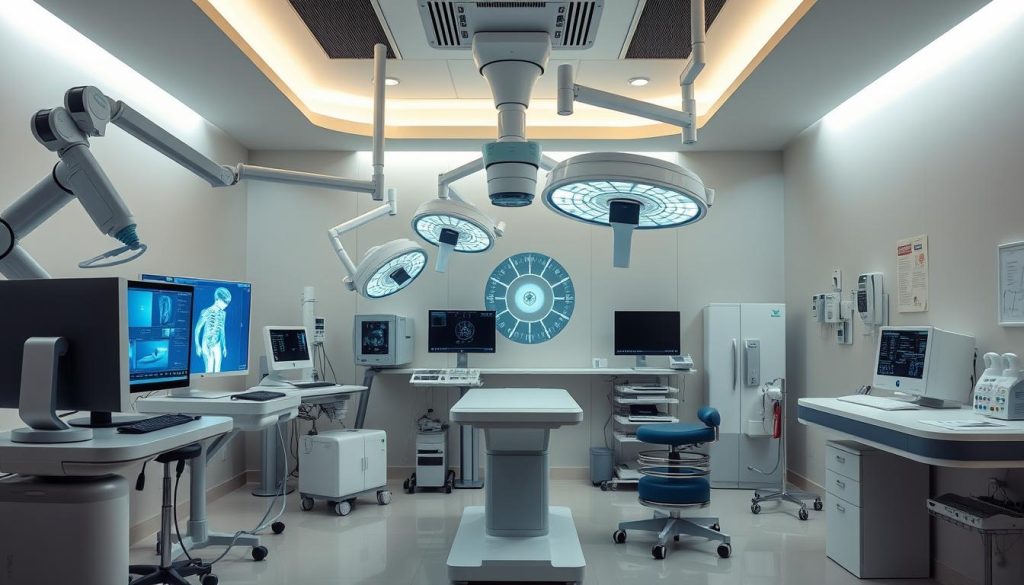
Conclusion
As we wrap up our talk on anal cancer, it’s key to think about the journey of living with anal cancer and the strength needed to overcome cancer. Knowing the causes, signs, and ways to prevent it can help people and their families deal with this disease better.
Getting the word out and making screening easy are key to catching it early. This can greatly improve the chances of beating anal cancer. Spotting symptoms early and seeing a doctor fast can lead to better treatment.
Knowledge nurtures hope, and hope is the cornerstone in the journey of overcoming cancer.
For those fighting anal cancer, many stories show not just survival but thriving after diagnosis. These stories are vital. They offer hope and real advice on getting better and adjusting.
| Aspect | Benefit |
|---|---|
| Early Screening | Improves early detection and treatment options |
| Education on Symptoms | Empowers individual action and reduces late diagnoses |
| Success Stories | Inspires and provides realistic expectations for recovery |
This detailed look shows that while anal cancer is tough, education, prevention, and care can make a big difference. We’re dedicated to helping those living with anal cancer. We offer resources and support to make sure no one faces this alone.
Resources and Support for Anal Cancer Patients and Families
Getting a diagnosis of anal cancer can be tough, affecting both patients and their families. It’s important to find reliable cancer resources and support. These can offer both information and emotional help during tough times.
For those looking for support, many caring organizations and networks are available. The American Cancer Society and the Cancer Support Community are key. They provide the latest, accurate info to help with treatment choices and care.
But support isn’t just about facts. Emotional and practical help is also crucial. This includes counseling, support groups, and help with travel and staying during treatment. Local hospitals have social workers and patient navigators who can guide you to the right resources.
Online communities are also a big help. They offer a place to share experiences, advice, and support. Here, patients and families can find comfort and connection.
Beating cancer is a team effort. Patients, families, doctors, and support groups all play a part. The aim is to educate and support with clear info and inspiring stories.
The journey ahead may face many challenges. But with the right support, patients and families can face anal cancer with more confidence and hope. Remember, there’s a community ready to support you every step of the way.
FAQ
Q: What are the primary ways you can get anal cancer?
A: Anal cancer can come from many sources. High-risk human papillomavirus (HPV) infections are a big one. Smoking and having anal sex also raise the risk. Having many partners and a history of cancer can play a part too. Some people might be more likely to get it because of their genes.
Q: What are some key signs of anal cancer?
A: Signs of anal cancer include bleeding and discomfort in the rectum. You might also feel itching or notice a lump near the anus. Changes in how you go to the bathroom are another sign. If you notice these, see a doctor right away.
Q: How is anal cancer diagnosed?
A: Doctors usually start with a physical check-up and an anoscopy. This lets them see inside the anus. If they find something suspicious, they might take a biopsy. Tests like MRI or CT scans help figure out how far the cancer has spread.
Q: Are there ways to prevent anal cancer?
A: Yes, there are ways to lower your risk. Getting vaccinated against HPV is one. Safe sex and fewer partners help too. Quitting smoking and staying healthy are also important. Regular check-ups for those at high risk can catch problems early.
Q: Why is early detection of anal cancer important?
A: Finding anal cancer early is key. It means treatments can be less harsh. This can lead to better results and fewer side effects.
Q: What treatment options are available for anal cancer?
A: Anal cancer treatments often include chemotherapy and radiation. This combo is called chemoradiation. Sometimes, surgery is needed if other treatments don’t work or if the cancer comes back.
Q: Is there a connection between HPV and anal cancer?
A: Yes, there’s a strong link between HPV and anal cancer. The same HPV types that cause cervical cancer also lead to anal cancer. Getting the HPV vaccine can protect against these types.
Q: How does smoking affect the risk of anal cancer?
A: Smoking greatly increases the risk of anal cancer. The chemicals in cigarettes can damage the anal tissue, making cancer more likely.
Q: Can family history contribute to the risk of anal cancer?
A: Yes, family history can play a role. If your family has a history of cancer, you might be at higher risk. Talking to your doctor about your family’s health is important.
Q: What can be done if diagnosed with anal cancer?
A: If you’re diagnosed with anal cancer, work with your medical team to find the best treatment. Getting support from others and looking into clinical trials can also help.













